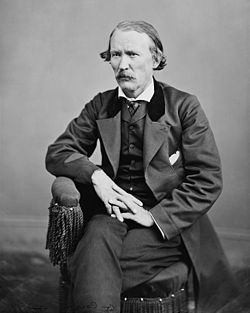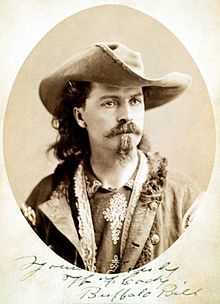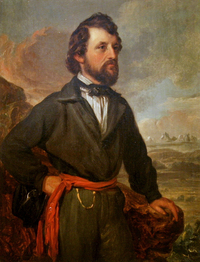May 23, 1868

Kit Carson dies of old age, at 58, in Fort Lyon, Colorado.
Christopher Houston “Kit” Carson was an American legend. He lived in a time of change, when the West was opening up to exploration and development. For most of his life he lived off the land, holding few actual paying jobs. During his lifetime he had been a trapper, a mountain man, a wild-erness guide, Indian agent, and even an American Army officer. As with many of the famous names of that period, their reputations were greatly enhanced by repeated embellishments of their exploits, sometimes by themselves or just normal story-telling by others to build up their own reputations, and sometimes by their biographers or people just looking to make a dollar by selling complete fiction. Ned Buntline did this for Buffalo Bill Cody, Wild Bill Hickok and Wyatt Earp.

Christopher left home at the age of 16 to become a mountain man and trapper in the vast and un-explored Western territories. In the 1830s, he accompanied Ewing Young on an expedition to what was then Mexican California and later joined fur trapping expeditions into the Rocky Mountains. To improve his chances of survival and acceptance by the carious tribes, Carson lived among and even married into the Arapaho and Cheyenne tribes. In the 1840s, based on his growing reputation as the one who knew the mountains, he was hired as a guide by John C. Fremont, the man who would become known as the Pathfinder. Carson achieved national fame through Fremont’s accounts of his

expeditions.While serving with Fremont, Carson took an active part in the uprising in California at the beginning of what became known at the Mexican-American War. Later in the war, Carson served as a courier and a scout, and became celebrated for his rescue mission after the Battle of San Pasqual and for his coast-to-coast journey from California to Washington, DC., to deliver news of the conflict in California to the U.S. government. In the 1850s, he was appointed as the Indian agent to the Ute Indians and the Jicarilla Apaches.
During the American Civil War, Carson led a regiment of mostly New Mexico volunteers of Hispanic heritage supporting the Union at the Battle of Valverde in 1862. When the Confederate threat to New Mexico was eliminated, Carson turned on the native Americans he had lived with and led forces to suppress the Navajo, Mescalero Apache, Kiowa and Comanche Indians. For this service, Carson was breveted (a type of military commission conferred especially for outstanding service by which an officer was promoted to a higher rank without the correspond- ing pay) a Brigadier General, and given command of Fort Garland, Colorado, but after only a short time his declining health forced him to retire from military life. Carson was married three times and had ten children. Carson died at Fort Lyon, Colorado, of an aortic aneurysm on May 23, 1868. He is buried in Taos, New Mexico, next to his third wife Josefa Jaramillo.
To purchase a signed copy of Larry Auerbach’s novel “The Spirit Of Redd Mountain”, Click Here
Photo courtesy of wikipedia.com



